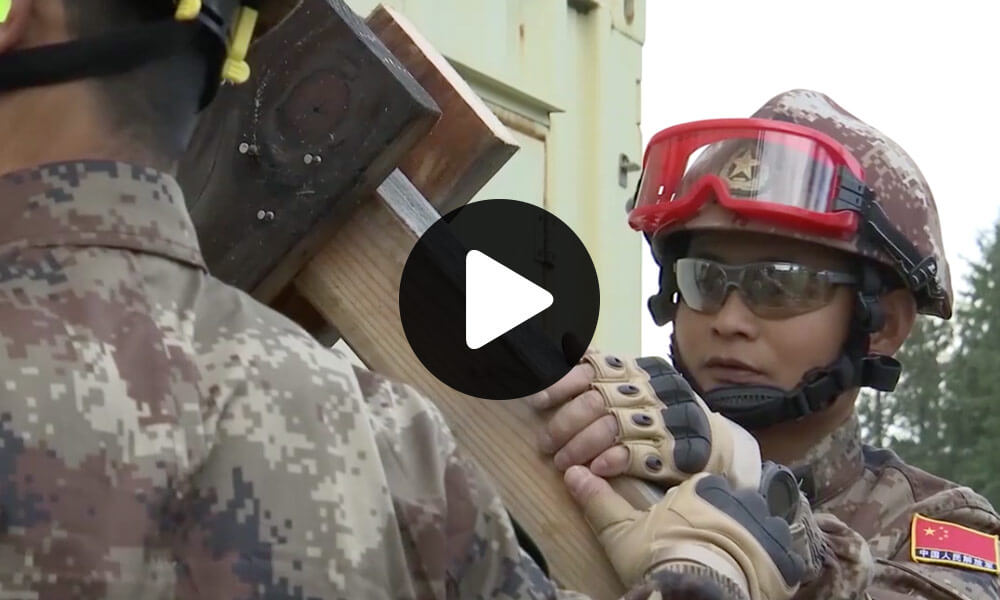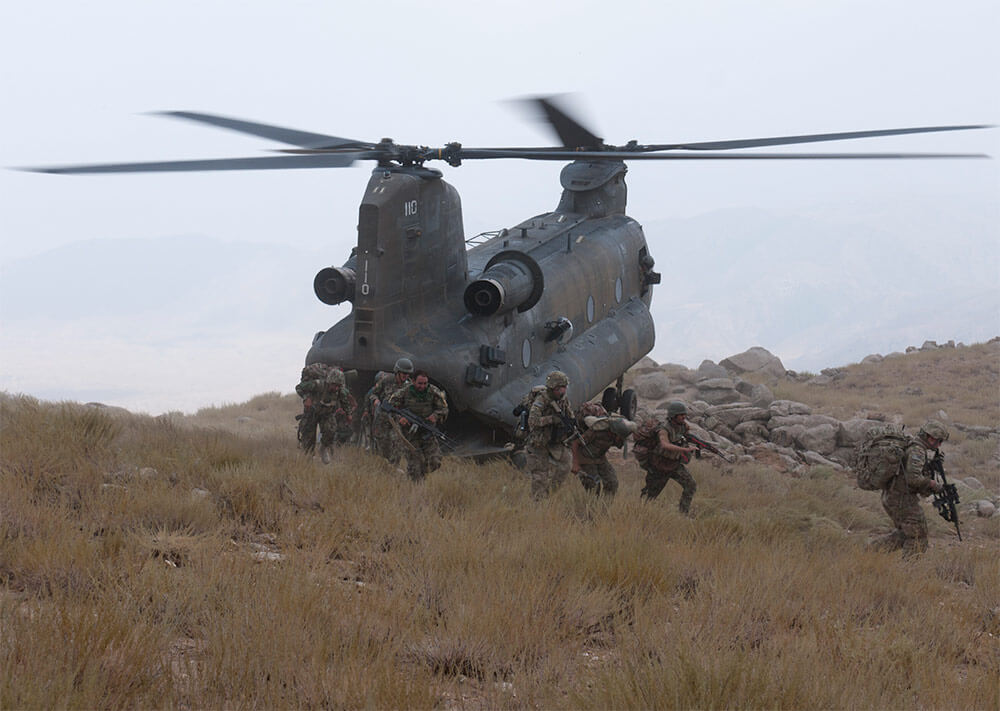
Oregon National Guard partners with Chinese for Disaster Management Exchange
“Earthquake, earthquake, earthquake!” is shouted overhead, prompting Chinese and American military search and extraction teams to immediately sprint into action. Working together, they must quickly find and rescue disaster victims scattered throughout the village. They pay no attention to the cold, hard rain hitting their faces or the difference of flags worn on their uniforms as, shoulder-to-shoulder, they carry masses of wounded casualties to safety.
The disaster was notional, the casualties were mannequins and the endangered village was a rain-drenched training area at Camp Rilea Armed Forces Training Center along the Oregon coast near the city of Warrenton. Engineers and medics from the Oregon National Guard and Joint Logistics Force Soldiers of the People’s Liberation Army (PLA) worked alongside each other to share disaster response capabilities during the 13th annual U.S.-China Disaster Management Exchange (DME) held Nov. 16-19, 2017.
U.S. Army Pacific hosts the annual U.S.-China DME to foster mutual trust and understanding between the forces, while sharing lessons learned to increase disaster response capabilities in the Pacific region.
“You don’t want to wait until a crisis to form relationships,” said GEN Robert B. Brown, U.S. Army Pacific commanding general. “You must do it beforehand, and that’s why this [exercise] is so important.”
The 2017 DME consisted of events planned through a Multinational Coordination Center, including an expert academic discussion and a tabletop exchange where leaders discussed the logistics and roles of the simulated emergency. Perhaps the most compelling piece of the exercise was the practical field exchange (PFE), which enabled hands-on and side-by-side interaction between U.S. and PLA soldiers. The DME simulated a response to a third country that was suffering from severe flooding. While the scenario itself was fictional, it was based on real-world damage assessments gathered from flooding that occurred in Peru last spring.


